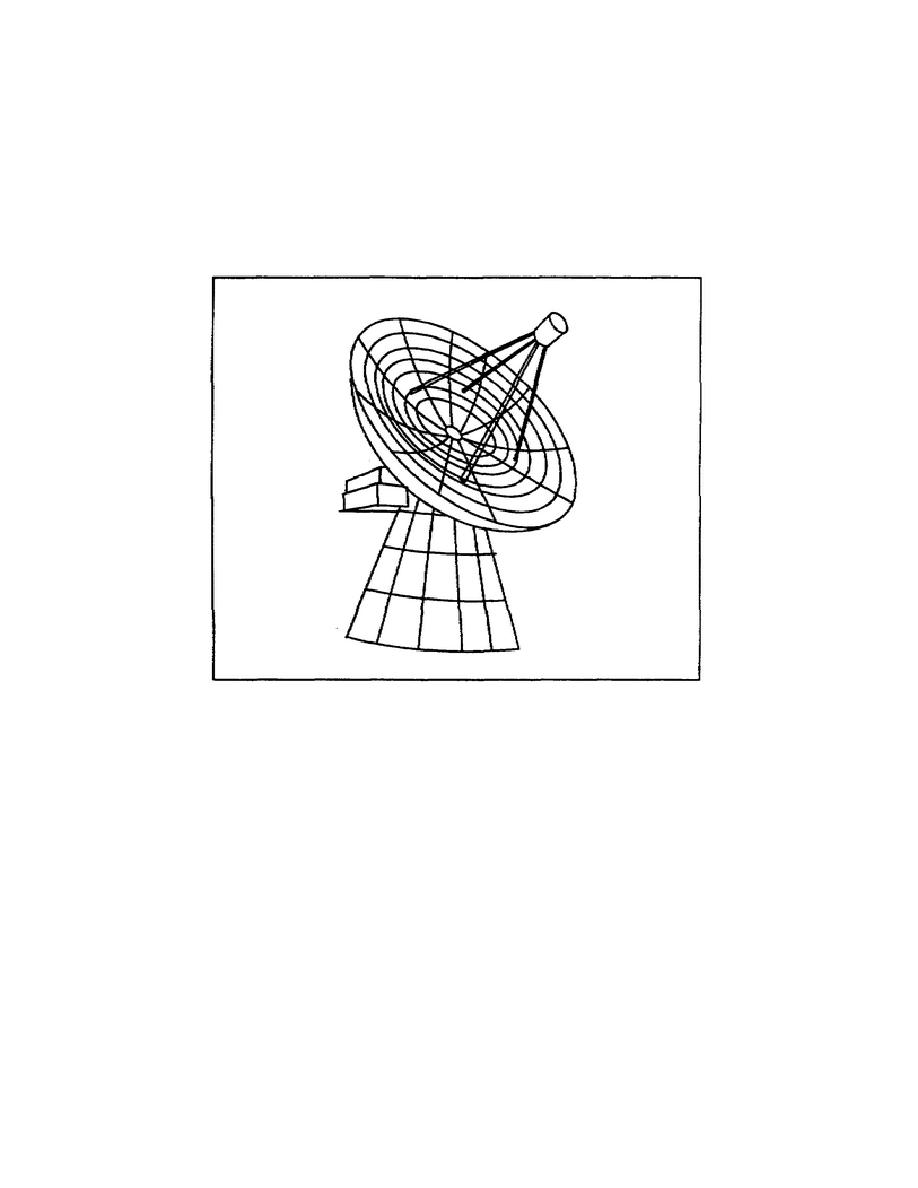
3. The antenna system. The antenna system is highly complex because the antennas at both stations must track
the satellite perfectly. If the antenna "aim" from either of the two ground stations is faulty, the radio beam from
that antenna will miss the satellite and the entire communications system may fail. To assist in aiming the
antenna at the satellite, a small transmitter is attached to the outer skin, radiating a signal just strong enough to
enable the antennas to track the satellite as it travels through its orbit. The same antenna can be used for both
transmission and reception by keeping the transmitting and receiving frequencies far enough apart in the
spectrum to avoid interference. An example of the highly complex tracking antenna system required for a
passive satellite system is shown in Figure 1-7.
Figure 1-7. A satellite tracking antenna.
4. Future trends in passive satellite communications. Communications systems employing passive satellites are
limited to horizon angles of transmission and reception that is, as soon as the satellite disappears over the
horizon, communications via that satellite is at an end until it next appears over the opposite horizon. Any
future system utilizing passive satellites will therefore consist of several satellites in nearly identical orbits, so
that one or more will always be visible above the horizon. Each station will require more than one antenna
system so that as one satellite goes over the horizon the second antenna system can be aimed at the satellite
coming into view. In this way, continuity of communications can be maintained. Since the received signal
strength is proportional to the reflecting surface area, future passive satellites probably will use larger balloons.
1-25
SS0031



 Previous Page
Previous Page
